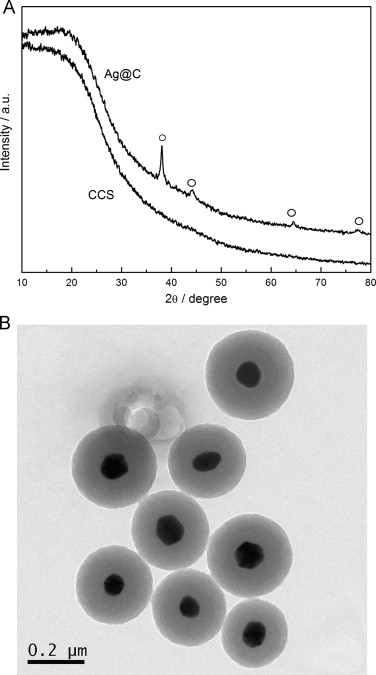Shuxian Maoa, Yumei Long*a, b(龙玉梅), Weifeng Li*a(李伟峰), Yifeng Tua, Anping Denga
a College of Chemistry, Chemical Engineering and Materials Science, Soochow University, Suzhou, Jiangsu 215123, PR China
b The Key Lab of Health Chemistry and Molecular Diagnosis of Suzhou, PR China
Biosens. Bioelectron. 2013, 48, 258-262.
Ag@C core–shell nano-composites have been prepared by a simple one-step hydrothermal method and are further explored for protein immobilization and bio-sensing. The electrochemical behavior of immobilized horseradish peroxidase (HRP) on Ag@C modified indium–tin–oxide (ITO) electrode and its application as H2O2 sensor are investigated. Electrochemical and UV–vis spectroscopic measurements demonstrated that Ag@C nano-composites provide excellent matrixes for the adsorption of HRP and the entrapped HRP retains its bioactivities. It is found that on the HRP–Ag@C/ITO electrode, HRP exhibited a fast electron transfer process and good electrocatalytic reduction toward H2O2. Under optimum experimental conditions the biosensor linearly responds to H2O2 concentration in the range of 5.0×10−7–1.4×10−4 M with a detection limit of 2.0×10−7 M (S/N=3). The apparent Michaelis–Menten constant (KappM) of the biosensor is calculated to be 3.75×10−5 M, suggesting high enzymatic activity and affinity toward H2O2. In addition, the HRP–Ag@C/ITO bio-electrode shows good reproducibility and long-term stability. Thus, the core–shell structured Ag@C is an attractive material for application in the fabrication of biosensors due to its direct electrochemistry and functionalized surface for efficient immobilization of bio-molecules.

Fig. 1. XRD pattern (A) and TEM image (B) of the Ag@C nanocomposite.
链接: //www.sciencedirect.com/science/article/pii/S0956566313002923